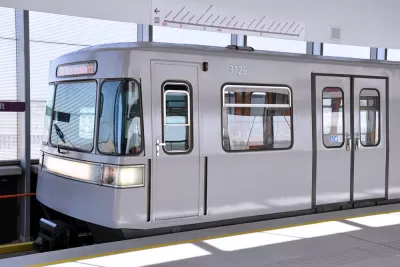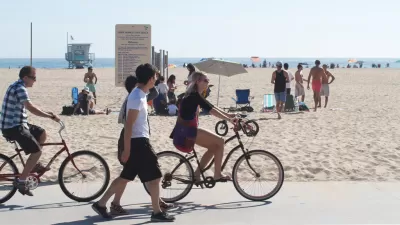How did Vienna, Austria, substantially reduce car trips while increasing bicycling and trips taken by public transportation over 25 years? A new paper published in the International Journal of Sustainable Transportation provides answers.

"Vienna's Path to Sustainable Transport" examines the politics of implementing sustainable transport policies in Vienna over a 25-year period from 1993 to 2014, leading to a reduction in the car mode share of daily trips from 40 percent to 27 percent while doubling cycling mode share and increasing transit mode share from 29 percent to 39 percent.
"The key to Vienna’s success has been a coordinated package of mutually reinforcing transport and land-use policies that have made car use slower, less convenient, and more costly, while improving conditions for walking, cycling, and public transport," notes the abstract.
Two strategies in particular deserve credit, according to researchers Ralph Buehler, professor of Urban Affairs, Virginia Tech; John Pucher, professor emeritus of Urban Planning, Rutgers University, and Alan Altshuler, professor emeritus of Urban Policy and Planning, the John F. Kennedy School of Government at Harvard University:
- Expansion of the U-Bahn or metro, a young system opening in 1978, two years after D.C.'s now-troubled Metro.
- Parking management
On a political level, the abstract notes two additional factors:
- "The continuity of social democratic governments in Vienna since 1945 has provided a crucial political basis for long-term implementation.
- "The Greens have vigorously pushed for accelerating implementation of sustainable transport policies since becoming part of the ruling coalition government in 2010."
Vienna, as well as other Western European cities, have made great progress in moving toward sustainable transportation patterns. This paper provides lessons for other cities to reduce auto-dependence.
FULL STORY: Vienna's path to sustainable transport

Alabama: Trump Terminates Settlements for Black Communities Harmed By Raw Sewage
Trump deemed the landmark civil rights agreement “illegal DEI and environmental justice policy.”

Planetizen Federal Action Tracker
A weekly monitor of how Trump’s orders and actions are impacting planners and planning in America.

The 120 Year Old Tiny Home Villages That Sheltered San Francisco’s Earthquake Refugees
More than a century ago, San Francisco mobilized to house thousands of residents displaced by the 1906 earthquake. Could their strategy offer a model for the present?

Ken Jennings Launches Transit Web Series
The Jeopardy champ wants you to ride public transit.

BLM To Rescind Public Lands Rule
The change will downgrade conservation, once again putting federal land at risk for mining and other extractive uses.

Indy Neighborhood Group Builds Temporary Multi-Use Path
Community members, aided in part by funding from the city, repurposed a vehicle lane to create a protected bike and pedestrian path for the summer season.
Urban Design for Planners 1: Software Tools
This six-course series explores essential urban design concepts using open source software and equips planners with the tools they need to participate fully in the urban design process.
Planning for Universal Design
Learn the tools for implementing Universal Design in planning regulations.
Clanton & Associates, Inc.
Jessamine County Fiscal Court
Institute for Housing and Urban Development Studies (IHS)
City of Grandview
Harvard GSD Executive Education
Toledo-Lucas County Plan Commissions
Salt Lake City
NYU Wagner Graduate School of Public Service




























